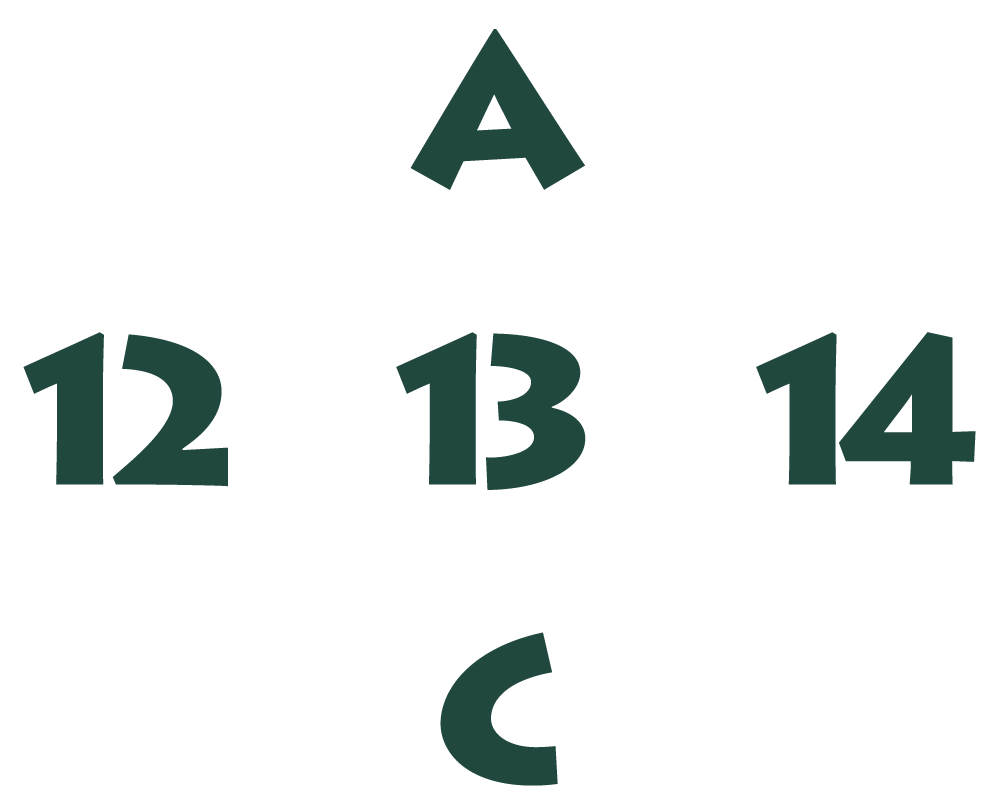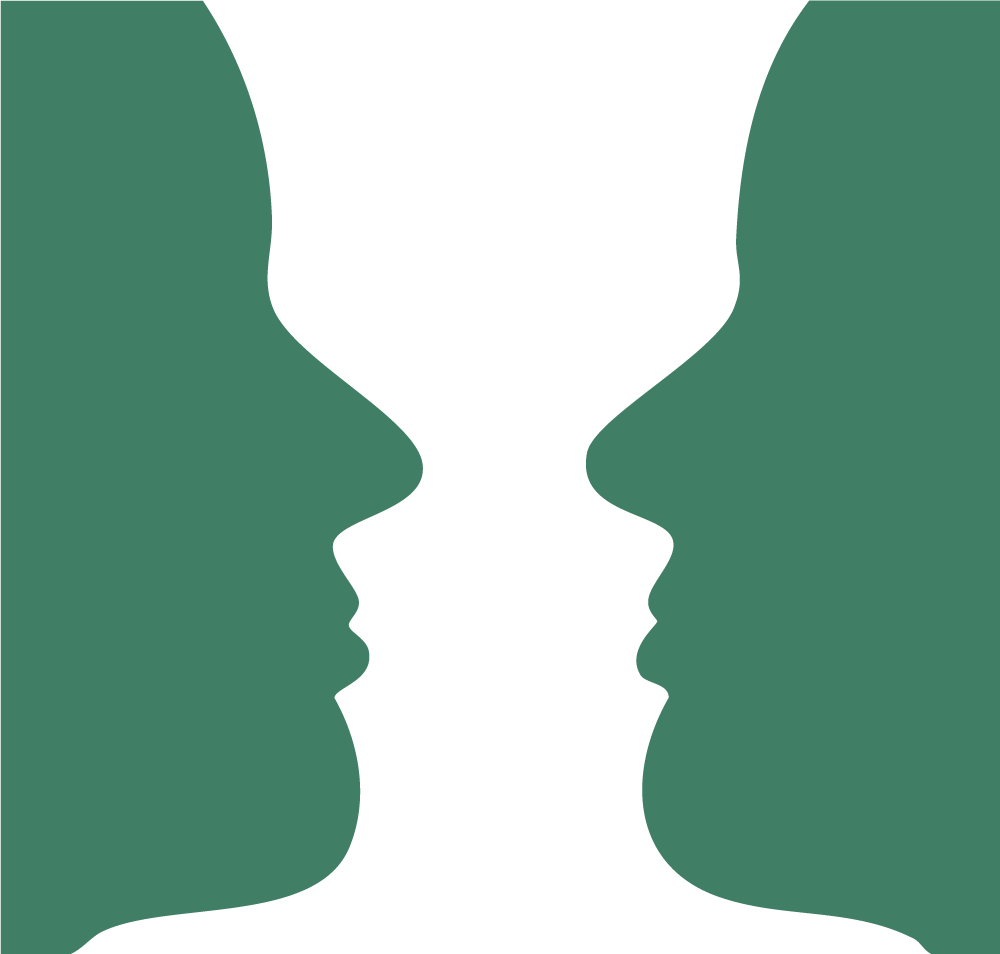Perception is the process by which the brain interprets and organizes sensory information to make sense of the world. It involves taking in stimuli from the environment through our senses – such as sight, sound, touch, taste, and smell – and transforming these sensations into meaningful experiences. Perception allows us to recognize objects, understand language, and navigate our surroundings. Perception is the outcome of our sensory input and how our brain processes and interprets that information.
Perception is influenced by whether one primarily relies on external sensory information (bottom-up processing) or internal preexisting expectations (top-down processing). Bottom-up processing begins with raw sensory data, such as patterns, colors, and sounds, and assembles them to form a complete perception. This process is used when encountering unfamiliar stimuli and involves interpreting information based solely on what is sensed.
Example: When learning a new language, people rely on bottom-up processing, focusing on each word’s sounds and letters, and gradually building up to an understanding of phrases and sentences.
In contrast, top-down processing draws on preexisting knowledge, memories, and expectations to make sense of sensory information. For example, recognizing a word in a sentence or identifying a partially-obscured object relies on top-down processing.
Example: When listening to a song in a noisy room, though some of the lyrics might be missed, preexisting knowledge such as context, the theme of the song, and knowledge of the artist’s style can be used to fill in the gaps.
The two types of processing work together to help us interpret the world, but top-down processing can sometimes lead to perceptual errors, when our expectations override accurate sensory input.
Schemas and Perceptual Sets
Schemas and perceptual sets are internal cognitive frameworks that influence how we interpret and perceive the world around us. Schemas are mental representations or frameworks that help us categorize new information, based on prior experiences or knowledge. For example, we have schemas for objects, events, and social interactions that allow us to quickly make sense of what we encounter.
A perceptual set is a readiness to see objects in a particular way based on expectations, experiences, emotions, and assumptions. Perceptual sets shape our perception by making us more likely to notice certain aspects of our environment while ignoring others based on prior experiences, context, or immediate cues. They can lead us to focus on what we expect or are primed to notice.
The key difference between schemas and perceptual sets is that schemas are long-term, general cognitive structures that guide how we organize and understand the world across different contexts, while perceptual sets are temporary filters that affect our perception in specific, immediate situations. Both schemas and perceptual sets allow us to process information efficiently, but they can also result in perceptual biases or errors when they cause us to overlook novel or unexpected details.
External Perceptual Influences
External factors such as context, personal experiences, and cultural expectations play a significant role in shaping perception. The environment or context in which a stimulus is encountered can heavily influence how it is interpreted. People’s immediate surroundings create expectations that make them see in particular ways. For example, an object may be perceived differently depending on the surrounding conditions, such as lighting or nearby objects.
Example: The figure below can be seen to contain either a sequence of letters, A B C, or a sequence of numbers, 12 13 14, depending on whether it is scanned down or across.

Personal experiences also contribute to perception, as individuals are more likely to interpret stimuli based on past encounters or familiar patterns. Additionally, cultural experiences shape how people perceive the world. Cultural norms, values, and expectations act as filters, influencing what individuals pay attention to and how they interpret specific events. For instance, cultural background can affect how people perceive art, social behaviors, and even facial expressions. These external factors interact with internal cognitive processes, guiding perception and sometimes contributing to perceptual biases.
Gestalt Psychology
Gestalt psychology, a school of thought that arose in Germany in the early 20th century, explored how people organize visual information into patterns and forms. Gestalt psychologists noted that the perceived whole is sometimes more than the sum of its parts.
Gestalt Principles
Gestalt psychologists described several principles people use to make sense of what they see. These principles include figure and ground, proximity, closure, similarity, continuity, and simplicity:
Figure and ground: One of the main ways people organize visual information is to divide what they see into figure and ground. Figure is what stands out, and ground is the background in which the figure stands. People may see an object as figure if it appears larger or brighter relative to the background. They may also see an object as figure if it differs noticeably from the background or if it moves against a static environment.
Proximity: When objects lie close together, people tend to perceive the objects as a group. For example, in the graphic below, people would probably see these six figures as two groups of three.

Closure: People tend to interpret familiar, incomplete forms as complete by filling in gaps. People can easily recognize the following figure as the letter K in spite of the gaps.

Similarity: People tend to group similar objects together. In the next figure, people could probably distinguish an upside-down letter T because similar dots are seen as a group.

Continuity: When people see interrupted lines and patterns, they tend to perceive them as being continuous by filling in gaps. The next figure is seen as a circle superimposed on a continuous line rather than two lines connected to a circle.

Simplicity: People tend to perceive forms as simple, symmetrical figures rather than as irregular ones. This figure is generally seen as one triangle superimposed on another rather than a triangle with an angular piece attached to it.

Visual Perceptual Processes
Our visual system is constantly working to interpret and make sense of the stimuli around us, using perceptual processes that help us understand our environment. Our brain often relies on cues, such as depth, motion, and context, to interpret stimuli. However, the brain’s perceptual processes can sometimes lead to misinterpretations of stimuli. By examining these processes, we can understand how our brain produces both accurate and misleading perceptions.
Depth Perception
To figure out the location of an object, people must be able to estimate their distance from that object. Two types of cues help them to do this: binocular cues and monocular cues.
Binocular Cues
Binocular cues are cues that require both eyes. These types of cues help people to estimate the distance of nearby objects. There are two kinds of binocular cues: retinal disparity and convergence.
Retinal disparity marks the difference between two images. Because the eyes lie a couple of inches apart, their retinas pick up slightly different images of objects. Retinal disparity increases as the eyes get closer to an object. The brain uses retinal disparity to estimate the distance between the viewer and the object being viewed.
Convergence is when the eyes turn inward to look at an object close up. The closer the object, the more the eye muscles tense to turn the eyes inward. Information sent from the eye muscles to the brain helps to determine the distance to the object.
Monocular Cues
Monocular cues are cues that require only one eye. Several different types of monocular cues help us to estimate the distance of objects: interposition, motion parallax, relative size and clarity, texture gradient, linear perspective, and light and shadow.
Interposition: When one object is blocking part of another object, the viewer sees the blocked object as being farther away.
Relative size: People see objects that make a smaller image on the retina as farther away.
Relative clarity: Objects that appear sharp, clear, and detailed are seen as closer than more hazy objects.
Texture gradient: Smaller objects that are more thickly clustered appear farther away than objects that are spread out in space.
Linear perspective: Parallel lines that converge appear far away. The more the lines converge, the greater the perceived distance.
Perceptual Constancy
Another important ability that helps people make sense of the world is perceptual constancy, which is the ability to recognize that an object remains the same even when it produces different images on the retina.
Example: When a man watches his wife walk away from him, her image on his retina gets smaller and smaller, but he doesn’t assume she’s shrinking. When a woman holds a book in front of her face, its image is a rectangle. However, when she puts it down on the table, its image is a trapezoid. Yet she knows it’s the same book.
Although perceptual constancy relates to other senses as well, visual constancy is the most studied phenomenon. Different kinds of visual constancies relate to shape, size, brightness, color, and location.
Shape constancy: Objects appear to have the same shape even though they make differently-shaped retinal images, depending on the viewing angle.
Size constancy: Objects appear to be the same size even though their images get larger or smaller as their distance decreases or increases. Size constancy depends to some extent on familiarity with the object. For example, it is common knowledge that people don’t shrink. Size constancy also depends on perceived distance. Perceived size and perceived distance are strongly related, and each influences the other.
Brightness constancy: People see objects as having the same brightness even when they reflect different amounts of light as lighting conditions change.
Color constancy: Different wavelengths of light are reflected from objects under different lighting conditions. Outdoors, objects reflect more light in the blue range of wavelengths, and indoors, objects reflect more light in the yellow range of wavelengths. Despite this, people see objects as having the same color whether they are outdoors or indoors because of two factors. One factor is that the eyes adapt quickly to different lighting conditions. The other is that the brain interprets the color of an object relative to the colors of nearby objects. In effect, the brain cancels out the extra blueness outdoors and the extra yellowness indoors.
Location constancy: Stationary objects don’t appear to move even though their images on the retina shift as the viewer moves around.
Attention
Attention is a process that interacts with sensation and perception, allowing us to focus on specific stimuli while filtering out others. It is influenced by both internal factors, such as our thoughts and motivations, and external factors, like environmental distractions. For instance, selective attention, the ability to focus on some bits of sensory information and ignore others, allows people to carry on day-to-day activities without being overwhelmed by sensory information. Reading a book would be impossible if the reader paid attention to not only the words on the page but also all the things in his peripheral vision, all the sounds around him, all the smells in the air, all the information his brain gets about his body position, air pressure, temperature, and so on. He wouldn’t get very far with the book.
Reversible figures, such as the one below, illustrate the concept of selective attention.

When people focus on the white part of the figure, they see a vase, and when they focus on the black part of it, they see two faces. To use the language of Gestalt psychology, people can choose to make the vase figure and the face ground or vice versa. Selective attention is furthermore demonstrated by the cocktail party effect (defined by Colin Cherry in 1953), where individuals can focus on a single conversation in a noisy environment but may still notice their name or a relevant topic from a different conversation.
Conversely, inattention can result in “blindness” to changes in the environment. For instance, inattention blindness can occur when a person fails to perceive an unexpected stimulus in plain sight due to attention on another task. This was famously demonstrated in Daniel Simons and Christopher Chabris’s (1999) “Invisible Gorilla” experiment, where participants didn’t notice a person in a gorilla suit because they had been tasked with counting basketball passes. The task diverted their attention from the unexpected stimulus walking across the court.
Another type of perceptual blindness is change blindness, which refers to failure to notice changes in the environment, as shown in the “door study” by Daniel Simons and Daniel Levin (1998). In this study, participants didn’t realize the person they were talking to had been swapped with someone else during a brief interruption, wherein people carrying a door walked between them. Both inattention blindness and change blindness highlight how attention can be limited and selective, causing us to miss unexpected stimuli or significant changes.
Apparent Movement
Apparent movement, or illusory motion, is the perception of movement in stationary objects. This occurs when visual stimuli are presented in such a way that the brain interprets them as moving, even though no actual motion is taking place. An example of this is the phi phenomenon, or stroboscopic movement, which is an illusion of movement that happens when a sequence of still images or lights, each slightly different from the one before, are presented in quick succession. The phi phenomenon is often described as the basis for the illusion of motion in animated signs or sequential light displays.
Example: Imagine a theater sign with a row of light bulbs that turn on and off in a sequence. Although each light bulb is stationary and only lights up in succession, our brain perceives this as a single light moving across the marquee. The lights themselves don’t move, but the brain connects the sequence to create an illusion of continuous motion.













